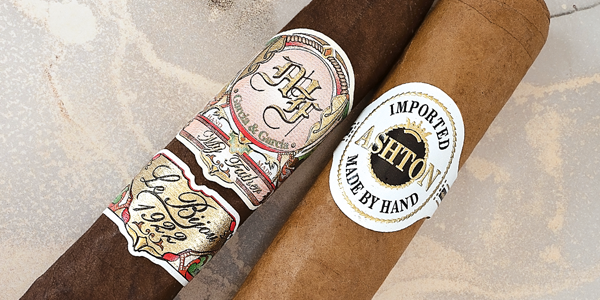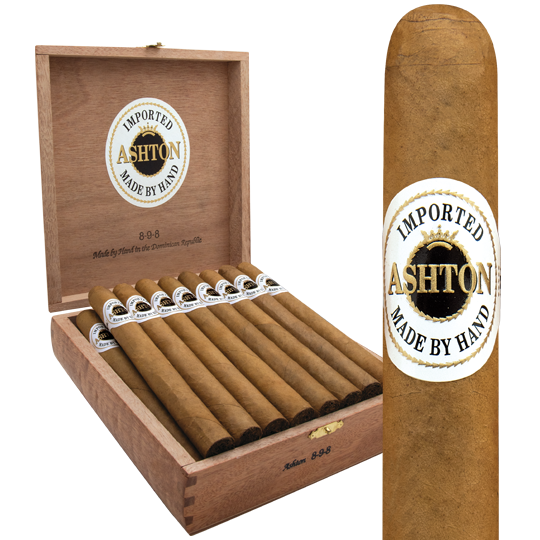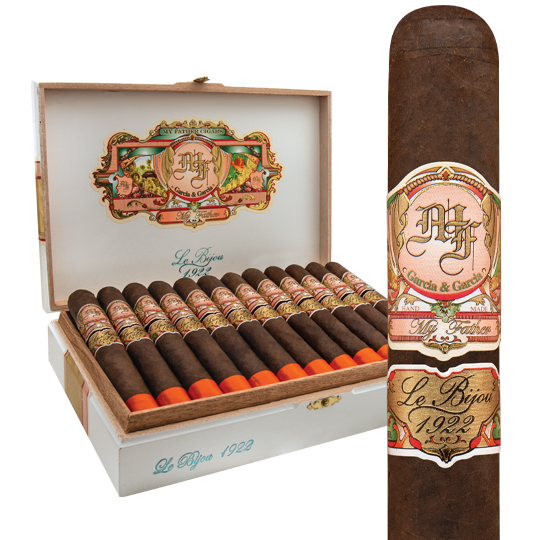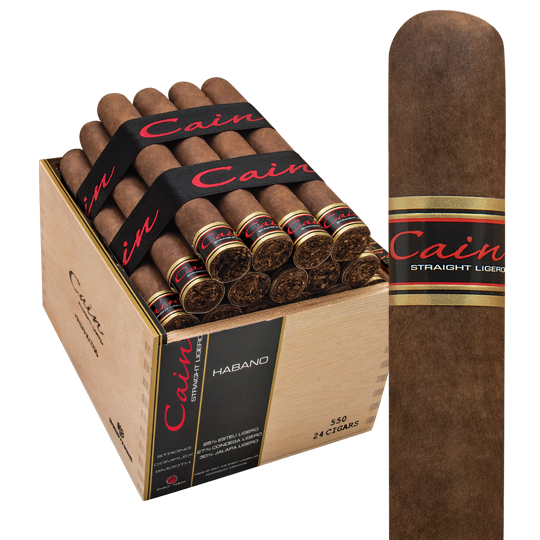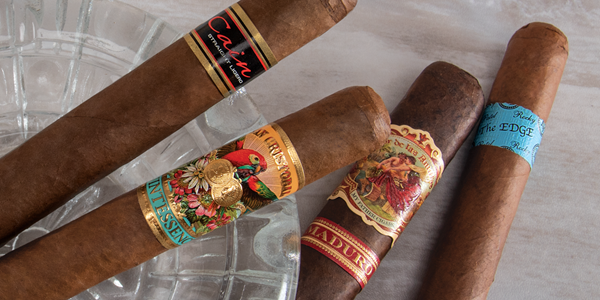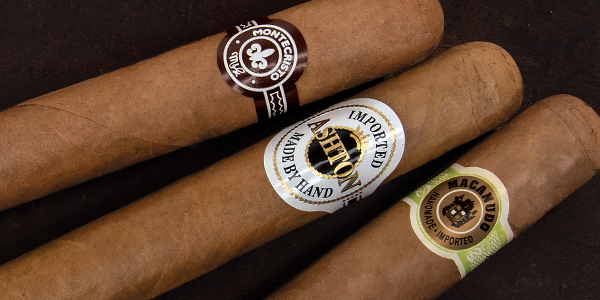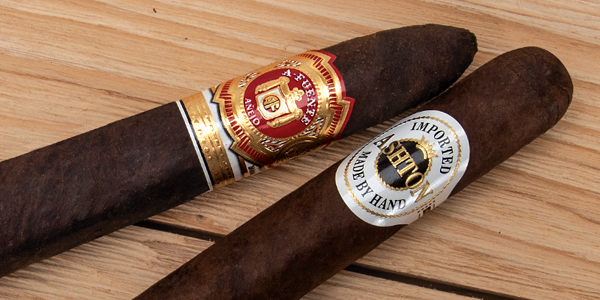Connecticut vs. Habano Cigar Wrappers
I find it difficult to compare wrappers. I certainly don’t like to set them up against one another as each wrapper tends to have its own personality. Also, these days, new hybrid wrappers are constantly being grown. It’s just hard to keep up.
Comparisons can be useful, however, when you’re figuring out what you like. Do I like the smoothness and mildness that is associated with the golden-hued Connecticut Shade wrapper? Will I prefer the Shade’s older sister, Broadleaf, which tends to get very dark after curing? Or do I want something rich, earthy, and darker like the Habano wrapper found largely in tobacco fields in Ecuador and Nicaragua, but now also grown in Connecticut in small quantities? Confused? The wonderful thing is that we have choices and we can also have them all. The joy is in the sampling.
Connecticut
The best Connecticut cigars are finished in wrappers cultivated in the state. Tobacco has been grown in the Connecticut River Valley since before the first European settlers arrived around 1630. Mostly, that tobacco was used in pipes. After cigars outstripped the popularity of pipes, a tobacco leaf called Shoestring was grown, eventually to be replaced by Broadleaf tobacco. As the name implies, Broadleaf grows very wide leaves. The plant itself is short and bushy. Generally, the plants, when harvested, are stalk cut, meaning the entire plant is taken instead of picking individual leaves. The use of Broadleaf for cigar wrapper began in 1820. By the 1830s, farmers were experimenting with different seeds and techniques. By 1875, they were planting seeds acquired from Cuba, Havana Seed. Later that century, seeds from Sumatra were planted in Connecticut. The combination of Havana and Sumatra seeds later gave rise to the creation of Connecticut Shade tobacco, a tall hybrid born in 1900, and grown under tents made of cloth to cut sunlight and raise humidity levels. The golden, silky Shade wrapper became the most coveted leaf for the world’s finest cigars.
Today, Broadleaf is prized for making Maduro wrapper leaves, though not exclusively. Shade tobacco is grown in different parts of the world, mainly Ecuador, and in many different ways. Connecticut has fallen off as a producer of wrapper leaves. To distinguish, Broadleaf is grown fully exposed to the sun. Shade tobacco, obviously, has the sun filtered by different coverings.
Habano
Again, the name says it best. Habano cigar wrapper hails from Cuba. Essentially, there are really two strains of Habano wrappers. There’s Habano and the Habano 2000. Both are hybrids, developed to combat disease. And both have made their way out of Cuba to be planted elsewhere, mainly in Ecuador, but also in Nicaragua.
A Note About Ecuador
With the never-ending search for new, less expensive locations in which to grow tobacco, growers have made Ecuador a top-flight provider of all three of the varieties of wrapper discussed here. In particular, the Ecuador Habano has gained immense popularity and raves. José “Pepin” Garcia, the maker of My Father and other premium cigars, calls Ecuador Habano grown by the Oliva family (not to be confused with the cigar-makers) “the best cigar wrapper in the entire world.”
All About the Flavor
As you know, the wrapper of a cigar accounts for a large percentage of the cigar’s flavor. In that respect, there are clear differences among Connecticut Shade, Connecticut Broadleaf, and Habano.
Connecticut Shade
A true Connecticut Shade wrapper is mild and very smooth in terms of flavor. Often, there is a sweetness to the wrapper. A very popular example of this wrapper is found in the Macanudo Cafe line. The Hyde Park, a 5.5 x 49 Robusto, about $8, would be the vitola I recommend you try. The wrapper encases a blend of Mexican and Dominican filler and delivers a very mild smoke. There is very little spice and you get mostly creaminess.
The Ashton Classic line sets the bar high for premium taste with a Connecticut Shade wrapper. Carlito Fuente blends this brand to an uncompromising standard for taste and consistency with a well-aged selection of Dominican binder and filler tobaccos. The Churchill, 7.5 x 52, at $12, is a great large cigar that is mild but filled with notes of cedar, almonds, and blonde roast coffee with a sweet and creamy finish.
Connecticut Broadleaf
This sturdier – and tougher to handle -- wrapper leaf provides more flavor and power than Shade. Connecticut Broadleaf tobacco is very popular as a Maduro wrapper, for example, on Ashton Aged Maduro. The No. 50, 7 x 48, about $11, is an exquisite mild-medium Churchill that you can compare to the one with the Shade wrapper. The Maduro cover leaf is aged for up to three years. There’s a lot of sweetness with earthy notes of maple, spices, and some chocolate. This is what Broadleaf Maduro tastes like.
A cigar with a fun shape is the medium-bodied La Flor Dominicana El Jocko Maduro, a small Perfecto, 4.5 x 54, for about $8. This Dominican cigar is slightly sweet with just a little bit of spice in the finish and creamy notes of cedar and nuts.
Habano
In general, whether grown in Nicaragua or Ecuador, Habano wrappers are more intense in flavor than either of the Connecticut varietals. Significant notes of coffee, cedar, leather, and spices are common in Habano-wrapped cigars. A great example of the Ecuador Habano is the My Father Le Bijou 1922 Torpedo Box Press, 6.125 x 52, for just over $11. This was Cigar Aficionado’s ‘Cigar of the Year’ in 2015. This is a full-bodied cigar with Nicaraguan fillers that deliver strong notes of leather, earth, espresso, and dark cocoa. A hearty spice lasts from start to finish. This is a cigar-lover’s cigar, showcasing the supreme quality of Ecuador Habano wrapper.
Taste the Alec Bradley Nica Puro Robusto, 5 x 50, about $8, for a sense of what Nicaraguan Habano offers. Again, this medium-powered cigar brings leather, nuts, and cocoa, but has a toasty finish with hints of fruit and wood. It’s often on sale for a big discount too. The Cain Habano Torpedo, 5 x 54, about $7, is another great Nicaraguan Habano to smoke. Its full-bodied profile is made with copious amounts of Ligero tobacco in the filler. Beefy notes of pepper, wood, earth, and leather distinguish this cigar.

